This gluten free and dairy free bannock is a modified version of a classic bannock bread recipe (sometimes also referred to as fry bread). It is a great recipe for people with celiac disease, food allergies or intolerances. Despite not using regular flour and dairy, the end result will satisfy your craving for this traditional bread recipe.
I live up north in the Yukon Territory, and bannock is part of a traditional First Nations diet here (as well as throughout North America). I feel grateful that I have had the opportunity to try the traditional recipes passed down by our elders, as well as to modify these recipes to make them more allergy friendly.
Product brands I recommend for this recipe
For this recipe, I recommend using the Robin Hood gluten-free flour blend if you can find it. It is the most similar to regular white all purpose flour that I have ever found, and has the best consistency. It is made with rice flour, potato starch, pea hull fibre, tapioca starch and xanthan gum.
I also recommend using a good quality pork or beef lard to deep fry your bannock in. Follow my recipe on how to make beef tallow (also works for making pork lard), or for my Yukon peeps you can buy premade pork or beef lard locally from Tum Tum’s Meats.
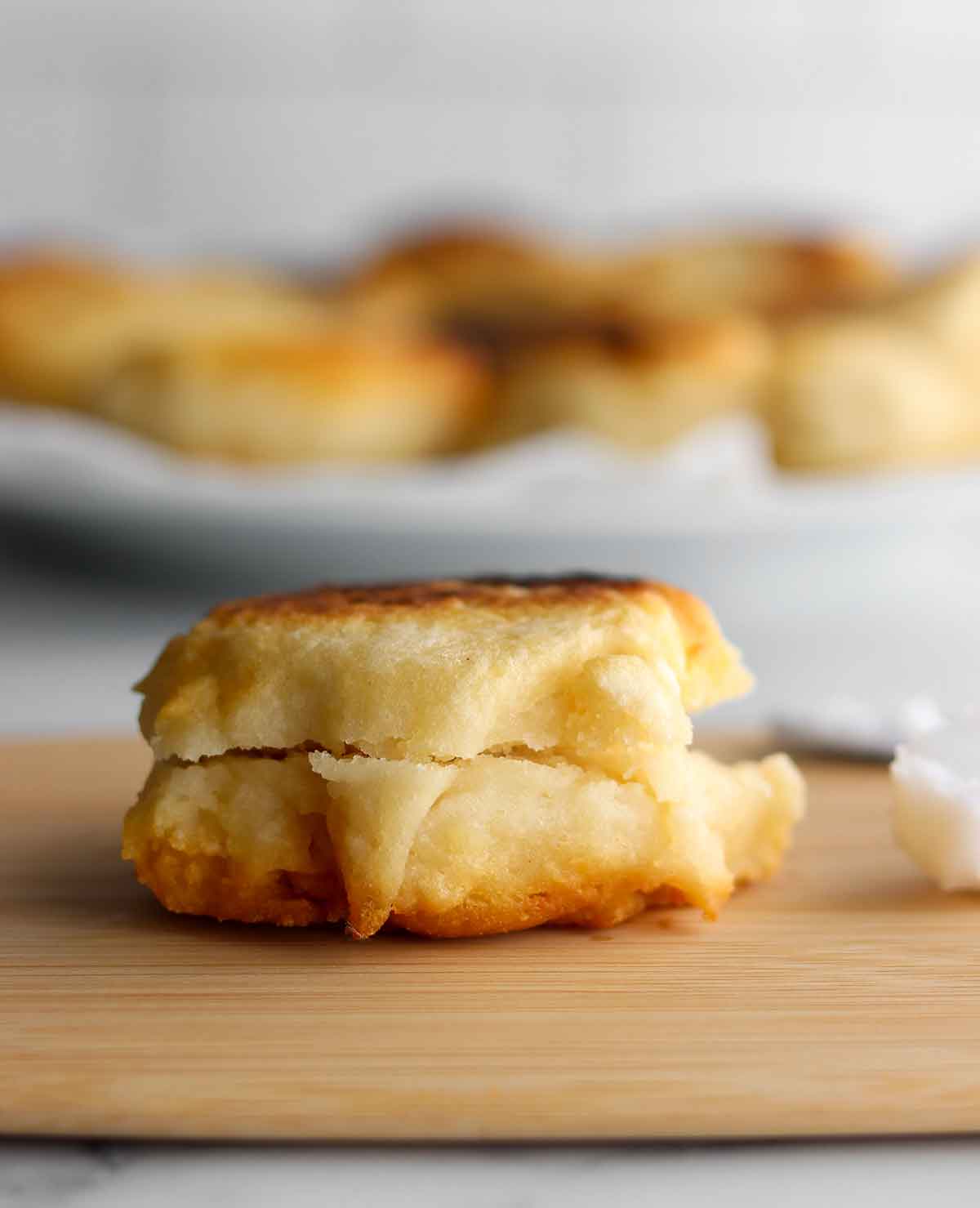
Recipe ingredient substitutions
Gluten free flour blends: If you aren’t able to get Robin Hood gluten-free flour blend, feel free to use any other all purpose gluten-free flour blend. Just keep in mind, you may not get consistent results. Try to find a blend that contains rice flour, potato starch, tapioca starch and xanthan gum for the best results. I wouldn’t recommend using oat flour or almond flour because they have a very different consistency.
Baking powder: If you don’t have baking powder, use 1 teaspoon of baking soda instead of the 2 teaspoons the recipe calls for.
Egg substitutions: Instead of using egg, you can also swap it out for additional water. Not all traditional bannock recipes use eggs, but I find it helps in gluten-free baking with keeping things from falling apart.
Pork lard substitutions: Traditional bannock would usually be cooked in lard, but you can also use vegetable oil, unflavoured coconut oil or even melted butter.
Dietary modifications
Make this recipe lower calorie: Instead of deep frying your bannock in pork lard or vegetable oil, you can also bake them in the oven. To do this, line a baking sheet with parchment paper and scoop the gluten-free dough into roughly 10 servings. Heat your oven to about 400°F and bake them for roughly 30 minutes or until cooked through. If you want you can also add a little bit of pork lard or vegetable oil to the dough to make sure that it doesn’t burn or stick to the pan.
Make this recipe paleo/grain free and AIP friendly: Instead of using gluten-free flour, swap it out for cassava flour. Instead of using 2 cups, reduce the amount to 1.5 cups. Cassava flour absorbs a lot more liquid than gluten-free flour does. Fry your bannock in pork lard or unflavoured coconut oil.
Make this recipe lower oxalate: Make sure you use a white rice based gluten-free flour. Otherwise this recipe is low to medium oxalate.
Make this recipe elimination diet friendly: Omit the egg and add an additional 1/8 -1/4 cup of water.
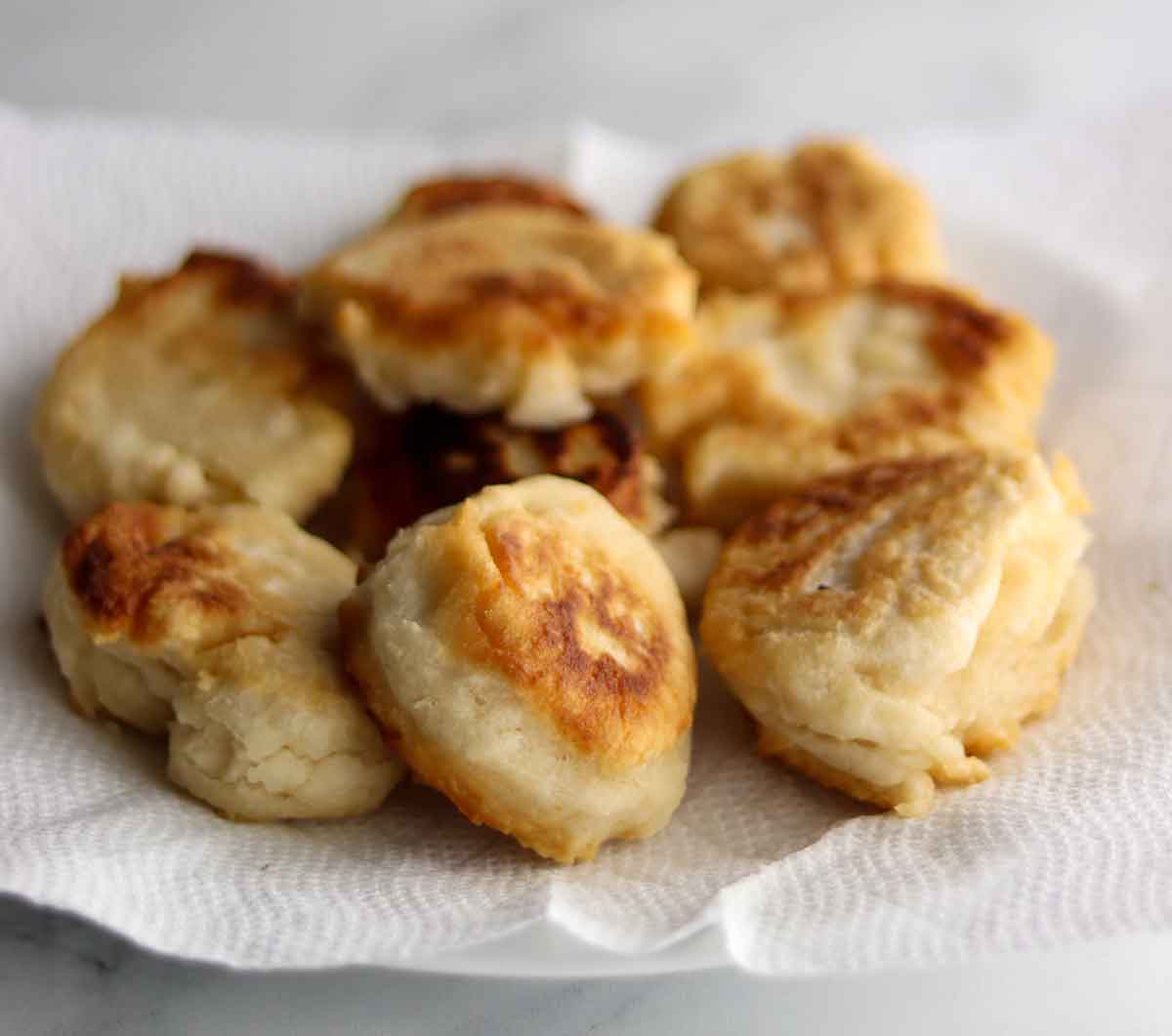
Recipe pairings
There are many ways to enjoy bannock, but here are a few of my favourites:
- With butter and/or jam (try my sugar free haskap berry jam!)
- With additional lard
- With your favourite soup or stew. And on that note, check out my moose stew recipe!
- Or just as a snack on its own. Why the heck not!
Storage and reheating tips
Store in an airtight container in the fridge for up to 1 week. Or you can freeze it in an airtight container for multiple months. When you are ready to eat it, take the container out of the freezer and thaw before eating. Reheat in the microwave for around 30 seconds, or if you want to crisp it up again you can toast it in a toaster oven for a few minutes. Good as new!
Tried my gluten and dairy free bannock recipe?
Please leave me a rating and review below, and post a picture of the dish to Instagram and tag me at @foodsnfeels 🙌
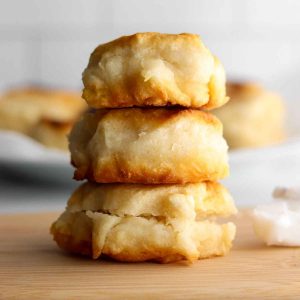
Easy Gluten Free Bannock Recipe
Ingredients
- 2 cups gluten-free flour (I recommend Robin Hood brand gluten-free all-purpose flour blend)
- 2 tsp baking powder
- 1/4 tsp salt
- 1 large egg (roughly 1/4 cup)
- 1 1/4 cup water
- 1/2 cup pork lard (or vegetable oil) – for frying the bannock
Instructions
- Mix together all of your dry ingredients (gluten-free flour blend, baking soda, and salt) in a stand mixer or large bowl.
- Add all of your wet ingredients (except for the lard/oil – this is for frying) to the flour mixture and mix thoroughly. The dough will be sticky and wet.Important: Different gluten-free flour blends will absorb different amounts of liquid, so start with only half the amount of water and work your way up. You don't want the batter to be so wet that it is runny. Alternatively, you also don't want it to be too dry and crumbly. If you are finding the dough too dry, add a bit of additional water.
- This is what the batter should look like.
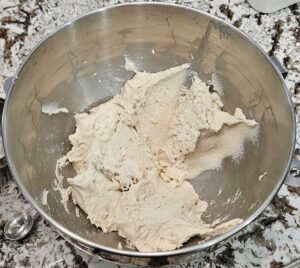
- Heat your pork lard or oil in your cast-iron skillet on the stove at medium heat. Once your pork lard is hot enough, test this out by dropping a small amount of dough into the pan and if it starts sizzling right away it is ready.
- Using a spoon, scoop equal portions of dough and form small circular pieces in the pan. Using the backside of a spoon, try to thin out the dough by pressing down on it so that it's not too thick. If it's too thick it may not cook through completely by the time it browns on both sides.
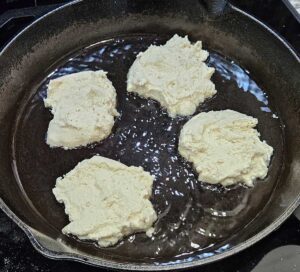
- Cook the first side until it turns golden brown, roughly a few minutes. Carefully flip your bannock pieces and then cook on the second side until it is golden brown and cooked through.If you are finding that the oil is not hot enough and your bannock is not browning, turn up the heat a little bit. Alternatively, if your bannock or oil is starting to burn, turn the heat down.
- Line a plate with paper towel. Scoop your cooked bannock pieces onto the paper towel to soak up some of the extra grease.
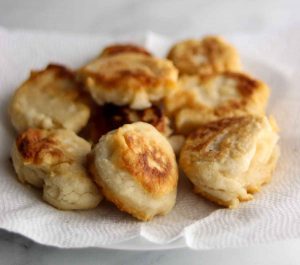
- Serve and enjoy!
Video
Notes
Nutrition
Disclaimer: This recipe post contains Amazon affiliate links. This means that if you click on a link and make a purchase, I will receive a small commission (at no extra cost to you). This helps support me so that I can continue to put out high quality, free recipes for you guys! Thank you 😁🙌

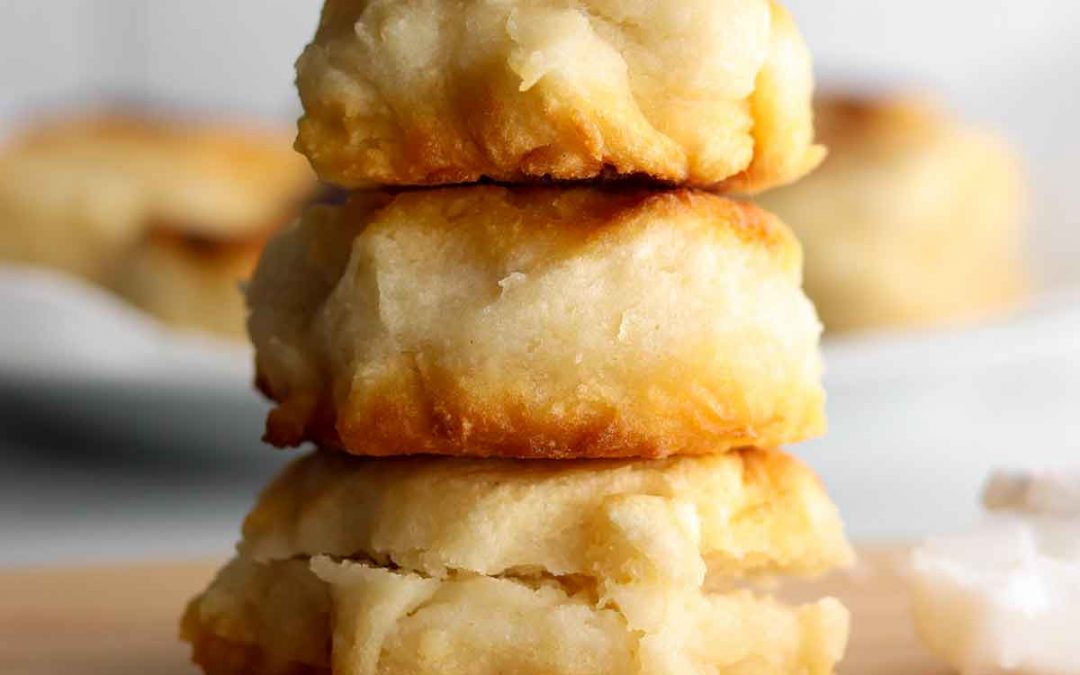

 Welcome to my blog! I share my *healthified* comfort food recipes that work with a variety of different diet approaches. AND all of my recipes are 100% gluten and dairy free.
Welcome to my blog! I share my *healthified* comfort food recipes that work with a variety of different diet approaches. AND all of my recipes are 100% gluten and dairy free.
As a child growing up in northern Alberta, I had eaten Bannock but it wasn’t until a recent visit to Prince George that I had occasion to ‘try it again’.
It was delicious so I came home and made your Bannock. It was SO delicious it was eaten immediately, causing me to make a second batch!
We enjoyed it with our hearty Seafood Chowder and then sprinkled with cinnamin & sugar.
Absolutely, especially cooked in the pork renderings!
Thank you so much for your comment, I really appreciate you taking the time and it warms my heart that you enjoyed my recipe and made it more than once! 🙂
I used Bob Mills 1:1 that didn’t include xantham gum, so I added a pinch. The dough was super runny. So I added another 100g of flour. I weighed the flour and started with 280g at first. The dough rested 30 mins. It was ok. Not the tastiest I ever had. Went well with out hamburger and potato soup tonight.
Thanks for your feedback! 🙂 The dough is definitely thinner than your average bannock dough, but shouldn’t be super runny. If you end up trying it again, try it with the thinner dough and if you add extra flour maybe just a very small amount. Could also have been different because of the different types of gluten-free flours in the Bob’s mix. Either way, thanks for sharing!
Wow !! DELISH !!
My first time eating bannock – period. I am a gluten-free vegan. So nice. Thank you for sharing your recipe and careful advice on substitutions.
I used 2 cups of gluten-free flour from Bulk Barn, skipped the egg – and went with an extra quarter cup of water, and fried gently in extra virgin olive oil. OMG! Repeat: DELISH!!
Bulk Barn has several types of gluten-free flours now. So, Bulk Barn’s bin no. 2875.
After thoroughly mixing, I just swirled into the batter (itself) a wee bit of extra virgin olive oil.
The amount of total olive oil used for frying and the wee swirl was no more than a quarter cup. Must cook on lower heat with olive oil – so as to not burn. I placed a breathable lid on top of my cast iron frying pan too – so as to cook through. Very gentle / loving process.
Outcome: WOW!! (and pleasantly filling).
Amazing! I’m so glad to hear that you enjoyed the recipe and that it worked well with the vegan substitute. Thank you for taking the time to share 🙂
I know it says dairy free but I made a version of Bannock with the same flour no egg but used milk instead of water and added that gum powder but I forgot to add my baking powder then I rolled my dough out sprinkled more flour on as to not be so sticky and made Bannock dogs(hot dogs wrapped in Bannock) then fried
I have not tried this recipe yet, but I am wondering if you have ever added raisins or saskatoons?
I haven’t tried it but you totally could! That sounds delicious 🙂